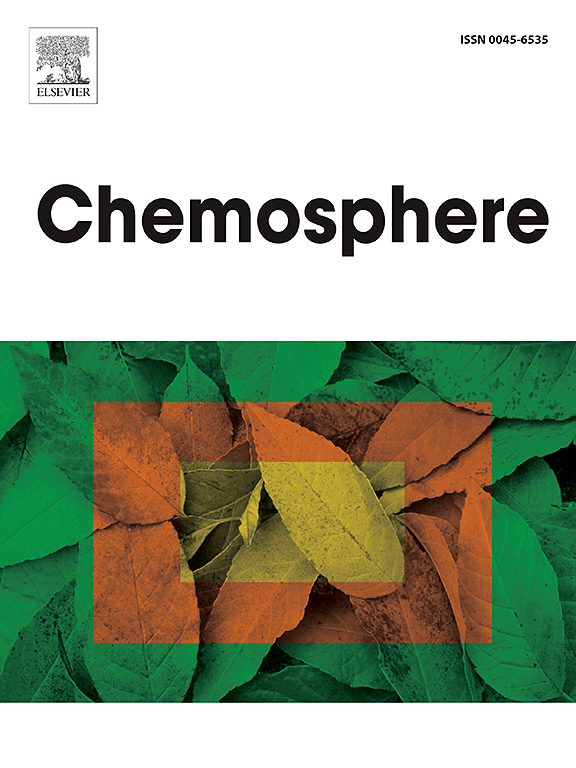西非水系统中汞的生物地球化学动力学和可持续修复
IF 8.1
2区 环境科学与生态学
Q1 ENVIRONMENTAL SCIENCES
引用次数: 0
摘要
在西非,汞污染环境饮用水源是具有挑战性的,需要制定战略来了解其生物地球化学转化和缓解,以提供无汞的清洁饮用水。本文评估了西非生态中汞的生物地球化学循环以及西非地区饮用水水源汞污染的缓解。研究表明,西非环境中含汞矿床和手工和小规模金矿开采是汞的主要来源。西非国家必须开发出从水中去除汞的可持续方法。然而,生物修复(包括微生物和植物修复)和吸附是净化西非汞污染环境饮用水源的有前途的方法。丛枝菌根菌、大肠杆菌、梭杆菌、绿色木霉、树胶线虫、Bascillus sp和囊状短杆菌等微生物已证明具有修复水系统中汞的能力。此外,雀稗(Paspalum conjugatum)、Cyperus kyllingia和Lindernia甲壳草(Lindernia甲壳草)等植物作为汞的植物修复剂显示出了令人满意的能力。活性炭、粘土和矿物粘土是西非丰富的资源,可以在水处理过程中作为吸附剂去除汞。然而,未来的研究应侧重于优化生物修复和吸附方法作为缓解策略的野外规模应用及其在西非的长期效益。西非政府必须为支持实现《水俣公约》协议的倡议和方案提供资金,这有利于实现可持续发展目标(SDG-6)。本文章由计算机程序翻译,如有差异,请以英文原文为准。

Biogeochemical dynamics and sustainable remediation of mercury in West African water systems
Pollution of environmental drinking water sources by mercury (Hg) in West Africa is challenging, with the need to develop strategies to understand its biogeochemical transformation and mitigation to provide clean drinking water void of Hg. This review evaluated the biogeochemical cycle of Hg in West African ecology and the mitigation of Hg contamination of drinking water sources in the West African region. The study revealed Hg-bearing mineral deposits and artisanal and small-scale gold mining as major sources of Hg in West African environment. West African countries must develop sustainable methods for removing Hg from water. However, bioremediation (including microbial and phytoremediation) and adsorption are promising methods for purifying Hg-contaminated environmental drinking water sources in West Africa. Microorganisms such as Arbuscular mycorrhizal, E. coli, Fusobacterium sp, Trichoderma viride, Gliocladium arborescens, Bascillus sp. and Brevibacterium cysticus have demonstrated the capacity to remediate Hg from the water system. Furthermore, plant species like Paspalum conjugatum, Cyperus kyllingia, and Lindernia crustacea revealed exciting capacity as phytoremediators of Hg. Activated carbon, clay and mineral clays are abundant resources in West Africa that can function as adsorbents for removing Hg during water treatment. However, future studies should focus on optimizing the field-scale application of bioremediation and adsorption methods as mitigation strategies and their long-term benefits in West Africa. It is essential that the government in West Africa fund initiatives and programmes that support the accomplishment of the Minamata Convention agreement, which favours the attainment of the sustainable development goal (SDG-6).
求助全文
通过发布文献求助,成功后即可免费获取论文全文。
去求助
来源期刊

Chemosphere
环境科学-环境科学
CiteScore
15.80
自引率
8.00%
发文量
4975
审稿时长
3.4 months
期刊介绍:
Chemosphere, being an international multidisciplinary journal, is dedicated to publishing original communications and review articles on chemicals in the environment. The scope covers a wide range of topics, including the identification, quantification, behavior, fate, toxicology, treatment, and remediation of chemicals in the bio-, hydro-, litho-, and atmosphere, ensuring the broad dissemination of research in this field.
 求助内容:
求助内容: 应助结果提醒方式:
应助结果提醒方式:


